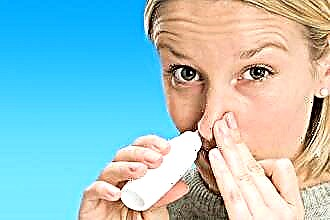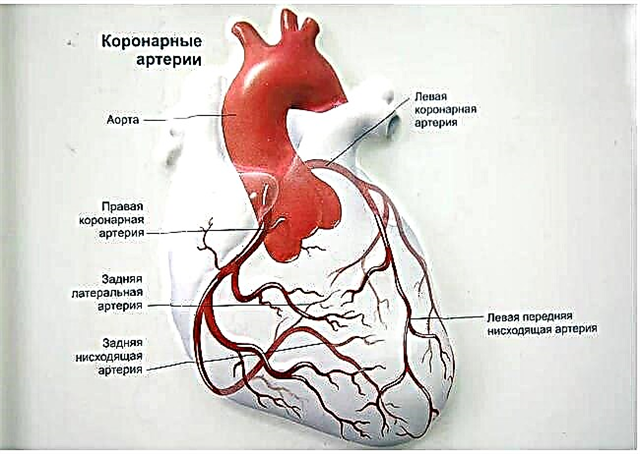All seawater sprays or solutions are isotonic saline solution obtained from sterilization and filtration of seawater. They usually contain many trace elements - sodium, magnesium, potassium salts, etc.
Drugs in this group have a positive effect on the course of various diseases of the nasopharynx - they thin mucus, reduce swelling, etc.
Benefits of seawater nasal products - versatility and safety.
They can be used for rhinitis of various etiologies, both in adults and in children. They are also allowed during gestation and breastfeeding.
Types of drugs
 Preparations based on seawater are divided into 3 groups - drops, sprays, and solutions for washing the nasopharynx. Drops and sprays are intended for nasal douches and nasal irrigation. In this case, drugs in the form of drops are prescribed for children, and sprays for adults. Washing solutions are designed for deep cleansing of the nasopharynx; used exclusively by adults.
Preparations based on seawater are divided into 3 groups - drops, sprays, and solutions for washing the nasopharynx. Drops and sprays are intended for nasal douches and nasal irrigation. In this case, drugs in the form of drops are prescribed for children, and sprays for adults. Washing solutions are designed for deep cleansing of the nasopharynx; used exclusively by adults.
The effect of drugs in this group depends on the chemical composition and concentration of salts (tonicity).
Most nasal sprays and solutions are isotonic to blood plasma - they contain 0.9% salts. Thanks to this, they do not put pressure on the cells of the body - they do not pull water on themselves, and do not lead to swelling of the cells.
Some nasal solutions are hypertonic - they contain more salts than cell fluid and blood plasma. As a result, they draw on themselves fluid from cells and blood vessels, which leads to a decrease in the volume of the mucous membrane, i.e., the removal of edema. Such sprays are prescribed for severe nasal congestion, and only for adults.
There are also hypotonic nasal solutions. They contain less salt than blood, so the cells of the mucous membrane absorb it. Such sprays are prescribed for severe dryness of the mucous membrane. An example of a hypotonic drug is Salin (0.65% saline solution).
Pharmachologic effect
Nasal drops and sprays containing sterile seawater are nasal moisturizers. Some saline sprays are also classified as anti-congestants (decongestants); these are, first of all, hypertonic nasal sprays.
What effect does sea water have on mucous membranes? The main ones can be distinguished:
- maintaining the physiological viscosity and composition of nasal mucus;
- liquefaction of mucus clots;
- softening dry crusts, facilitating their removal;
- reducing inflammation;
- moisturizing the mucous membrane with severe dryness (for example, with atrophic rhinitis, dehydration);
- a decrease in the number of microorganisms in the nose in infectious diseases;
- nasal rinses flush allergens, dust and other particles from the nose that enter the nasal cavity with air.
Thus, despite the simplest composition, moisturizing nasal drops and rinsing solutions have a pronounced therapeutic effect in various disorders of the nasopharynx.
Indications for use
Moisturizing sprays and rinsing solutions have the broadest list of indications for use:
- In case of infectious rhinitis caused by a viral or bacterial infection, saline solutions thin the mucus, making it easier to remove it, and also flush out some of the microorganisms from the nasal cavity. This remedy will not save you from a cold, but it will help to transfer it easily and without complications.
- In allergic rhinitis, saline sprays and rinsing solutions remove allergens from the mucosal surface, thereby reducing the likelihood of developing an allergic reaction.
- With dry rhinitis (subatrophic, atrophic), to compensate for the lack of nasal mucus, as well as to soften the crusts in the nose.
- With a tendency to nosebleeds - to moisturize and maintain the elasticity of the mucous membrane.
- With inflammation of the adenoids, a solution based on seawater will prevent nasal mucus from thickening and accumulating in the nasopharynx.
- For postnasal drip syndrome, seawater rinsing solution will help flush mucus from the nasopharynx and reduce mucosal inflammation.
- During the postoperative period, seawater will help restore the mucous membrane (after removal of polyps, adenoids, sinus puncture, septoplasty).
- With sinusitis, sea water washes away the pus, preventing the spread of infection.
- Also, sea water is an excellent remedy for hygienic care of the nasal cavity and throat, as well as for eliminating discomfort in dry, air-conditioned rooms.
Preparations based on seawater are indispensable in the treatment of many diseases of the nasal cavity, but they play the role of ancillary therapy. You should not rely only on them in the treatment of serious diseases.
Preparations based on sea water are used in combination with stronger drugs, the selection of which depends on the causes of the disease. For example, for a bacterial infection, they are used against the background of antibiotic treatment, for allergies - simultaneously with antihistamines / corticosteroids, etc.
Contraindications
By itself, the saline solution has no contraindications - it can be used in the first days of life, as well as by pregnant women, lactating women, people with severe metabolic disorders. Only a few ways of using saline solutions have contraindications.
So, a number of contraindications have rinsing the nasal cavity. You should not resort to it in such cases:
- with inflammation of the middle ear (otitis media), or the Eustachian tube (Eustachitis);
- the presence of wounds in the nasal cavity, surgical sutures;
- with fragility of the nasal blood vessels;
- if the patency of the nasal passages is impaired (severe curvature of the nasal septum, large polyps, tumors, severe edema);
- if we are talking about a child under 3 years old;
- the patient has epilepsy.
Injection of seawater under pressure (i.e. using a spray) is contraindicated in early childhood (up to 1 year), as well as with a tendency to muscle cramps.
The fact is that a sharp inhalation of microdispersed particles can lead to laryngospasm - a sharp contraction of the muscles of the larynx. This condition is quite dangerous, especially for children.
The introduction of seawater into the nasal cavity drop by drop is the safest way; it has absolutely no contraindications.
List of drugs
Pharmacies offer the widest range of seawater nasal preparations. How, apart from the price, do they differ? Consider the most popular nasal drugs in this group, and see what features they have.
For adults
Among the drugs designed for adult patients, the following can be distinguished:
 Humer. These are drugs made in France for the treatment and care of the nasal cavity. An expensive but reliable brand. The line includes a spray for nasal irrigation (there is a form for adults and for children), a hypertonic solution to relieve swelling, and a liquid for rinsing the nasopharynx. Recommended for allergies, acute respiratory viral infections, sinusitis.
Humer. These are drugs made in France for the treatment and care of the nasal cavity. An expensive but reliable brand. The line includes a spray for nasal irrigation (there is a form for adults and for children), a hypertonic solution to relieve swelling, and a liquid for rinsing the nasopharynx. Recommended for allergies, acute respiratory viral infections, sinusitis.- Marimer. There are drugs for patients of different ages, both isotonic (moisturizing) and hypertonic (decongestants).
- Physiomer is another French drug; the solution in the form of drops is suitable for infants.
- Aqualor is one of the most popular brands.Differs in a wide range of drugs - there are aerosols for moisturizing, to relieve swelling, as well as preparations containing, in addition to salts, plant extracts.
- Aqua Maris. It is very popular due to its affordable price and high efficiency. Aqua Maris Plus is enriched with dexpanthenol, which accelerates the healing process, therefore it is indicated for atrophic rhinitis, as well as after operations on the ENT organs. Aqua Maris Sens contains ectoine, which reduces the sensitivity of the mucous membrane to allergens - it is indicated for hay fever. Aqua Maris Strong is a hypertonic solution that reduces edema (prescribed for congestion).
- Morenazal is a Russian-made drug based on sea water. Isotonic, in the form of a spray.
- Otrivin sea - spray for removing edema based on sea water. An effective remedy for runny nose and congestion. Not suitable for children under 3 years of age, as well as during pregnancy and lactation.
- Dolphin. The peculiarity of the drug is the release form. It is a powder for solution preparation. The kit includes a bottle with a dosing cap for introducing the drug into the nose.
For kids
What is the difference between children's preparations based on sea water? Firstly, the concentration of salts (here it is usually lower than in preparations for adults), and secondly, the dosage, which is determined by a special nozzle that delivers a smaller amount of solution per press.
Among the drugs developed for children, the following are especially popular:
- Aqualor Baby - suitable from the first days of life, comes in the form of drops;
- Aqua Maris for children - isotonic solution, in the form of drops and spray;
- Quicks (hypertonic spray, to relieve swelling), suitable for children over 3 months;
- Otrivin Baby - isotonic saline solution; does not contain vasoconstrictor components.
Most children's drugs are in the form of nasal drops - many of them are allowed to be used from the first days of life. Sprays and aerosols can be used by children over 1 year old.
Nasal flushing technique
Improper rinsing of the nose can have unpleasant consequences, in the first place - otitis media caused by the leakage of fluid into the middle ear. We will show you how to make this procedure safe and comfortable.
For infants
Washing for children under one year old is done in the supine position. The child should be calm. He can lie on his side or on his back.
A few drops of isotonic saline solution are injected into the child's nostrils in turn (no more than 5 drops in each nostril). After that, the baby is taken in his arms, giving him a vertical position ("column"). You need to lightly massage the wings of his nose for a few minutes. After that, the nose should be blotted with a napkin, and the nasal passages should be cleaned with a gauze turunda. You cannot enter the deep parts of the nose.
Adults
 The “adult way” washing is done differently. You will need a special container for washing, or a small pear or a new syringe without a needle.
The “adult way” washing is done differently. You will need a special container for washing, or a small pear or a new syringe without a needle.
The solution is injected into one nostril with the head tilted to one side. The liquid is poured into the upper nostril and exits from the lower. The procedure is carried out alternately on both sides.
In case of postnasal leakage syndrome, another method is recommended - the solution is injected alternately through the nostrils, and flows out through the open mouth. At the same time, the person should bend down over the sink (there is no need to tilt his head to one side).
The most important thing during the washing procedure is smoothness, calmness, and avoidance of sudden drawing in and out of the liquid. The solution should be at a comfortable temperature (close to body temperature).
Cheap counterparts
Ordinary saline solution (the so-called "saline solution") copes with the tasks performed by preparations based on seawater. This is water containing 0.9% table salt. This solution is isotonic to blood plasma, therefore it is called "physiological". It has been used successfully as a nasal moisturizer and cleanser for both adults and children. It has an affordable price and is practically not inferior to the advertised nasal preparations. Its only drawback is the lack of a convenient bottle.
The saline solution can be prepared at home. To obtain 0.9% salt concentration, it is necessary to dissolve 9 grams of table salt in 1 liter of water (this is about 1 teaspoon). The water should be boiled and filtered.
A self-prepared saline solution can be used to rinse and irrigate the nasal passages in adults, but for children it is better to purchase a finished product - it is sterile and does not contain any impurities.

 Humer. These are drugs made in France for the treatment and care of the nasal cavity. An expensive but reliable brand. The line includes a spray for nasal irrigation (there is a form for adults and for children), a hypertonic solution to relieve swelling, and a liquid for rinsing the nasopharynx. Recommended for allergies, acute respiratory viral infections, sinusitis.
Humer. These are drugs made in France for the treatment and care of the nasal cavity. An expensive but reliable brand. The line includes a spray for nasal irrigation (there is a form for adults and for children), a hypertonic solution to relieve swelling, and a liquid for rinsing the nasopharynx. Recommended for allergies, acute respiratory viral infections, sinusitis.

